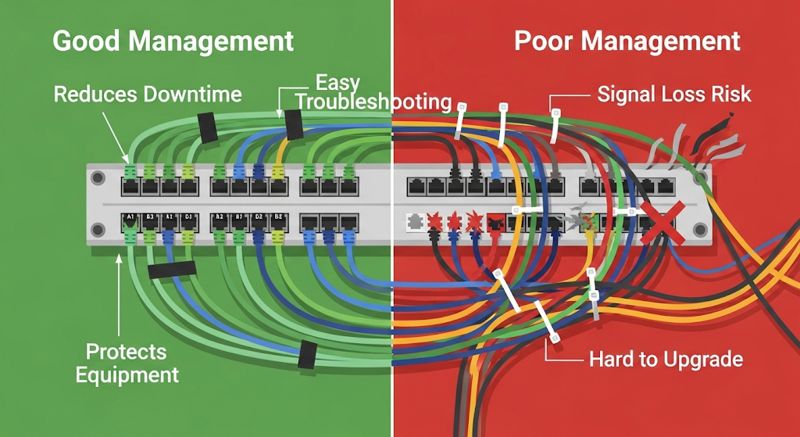Cable & Wire | High quality and excellent service at reasonable prices.
info@zion-communication.com
Author: Will Publish Time: 11-08-2025 Origin: Site
Patch panels serve as the backbone of structured cabling systems, providing a centralized point for organizing and connecting network cables. These critical components facilitate efficient data transmission, simplify troubleshooting, and enable proper cable management. Whether deploying a small office network or a large data center, patch panels are indispensable for creating reliable and scalable network infrastructures.

A patch panel (sometimes called a patch bay or patch field) is a hardware assembly containing multiple network ports. It serves as the central termination point where permanent cabling connects to active network equipment through short patch cables.
Ethernet networks (supporting Cat5e, Cat6, Cat6a, and Cat7 standards)
Fiber optic networks (accommodating single-mode and multimode fibers with LC, SC, or ST connectors)
Audio-visual distribution systems
Telecommunication installations
Patch panels serve as the critical interface between permanent horizontal cabling (running through walls and ceilings) and active network equipment, such as switches and routers.
Permanent cables from wall outlets terminate on the rear of the patch panel using punch-down blocks or fiber optic connectors
Short patch cables connect the front ports of the patch panel to network switches or routers.
Technicians can reconfigure connections at the front without disturbing the permanent cabling infrastructure.
Patch panels consolidate all network connections in one organized location, eliminating cable clutter and confusion in server rooms or telecom closets.
Properly labeled ports enable technicians to quickly identify and resolve issues without having to trace cables through walls or ceilings.
Network expansions only require adding patch cords or panels, avoiding the need for complete rewiring.
By handling connections at the patch panel rather than directly at switches, you prevent wear on expensive network equipment ports.
Well-organized patch panels improve the aesthetics of server rooms and data centers, meeting professional standards and client expectations.
Type | Description | Applications |
Supports RJ45 Ethernet connections (Cat5e, Cat6, Cat6a). | Office LANs, data centers. | |
Uses fiber adapters (LC, SC, ST) for high-speed data transfer. | ISP networks, backbone cabling. | |
Modular Patch Panel | Accepts keystone jacks for different media types. | Mixed-media networks. |
Wall-Mount Patch Panel | Smaller size for wall installations. | Small offices, remote sites. |
■ Selecting the Right Patch Panel for Your Needs
Cable Type: Choose between RJ45 (copper) or fiber optic panels
Port Density: Options range from 12-port to 48-port configurations in standard 1U rack units
Performance Rating: Match to your cable category (Cat5e, Cat6, Cat6a, etc.)
Mounting Style: Rack-mounted (19" standard) or wall-mounted versions
Shielding: Shielded panels for high-interference environments
Labeling System: Clear port identification and color-coding options
Label all ports to correspond with wall outlet locations
Implement proper cable management to prevent sharp bends and strain
Maintain consistent termination standards (T568A or T568B)
Separate data cables from AC power lines to minimize interference
Thoroughly test all connections after installation
Regularly inspect for loose or damaged connections
Keep panels clean and dust-free
Update documentation whenever changes are made
Use Velcro straps instead of zip ties for easier cable adjustments
Schedule periodic performance testing
While patch panels may appear as simple collections of jacks, they form the foundation of organized, flexible, and maintainable network infrastructures. Whether deploying a small office network or a multi-story data center, investing in quality patch panels pays dividends through time savings, reduced maintenance costs, and improved system reliability. By following proper selection, installation, and maintenance practices, patch panels will serve as the durable backbone of your network for years to come.
Contact us for more information

Will is the Copper Cabling Product Manager at Zion Communication,
specializing in the development and marketing of Ethernet cabling solutions.
With extensive industry experience, he is dedicated to delivering high-performance
and reliable cabling products to OEM/ODM clients worldwide.
will@zion-communication.com
+86 -18268007201
